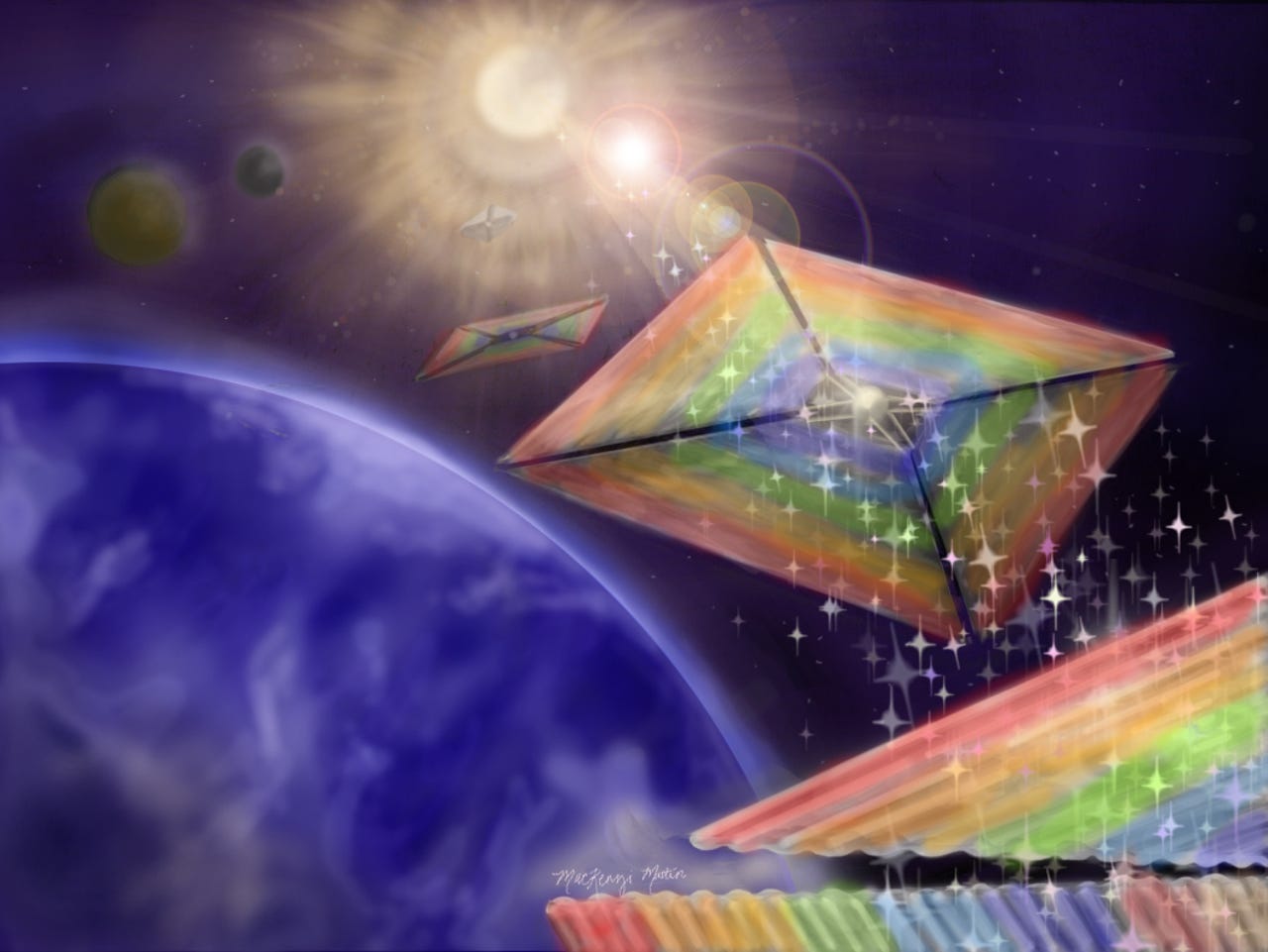
































Diffractive solar sails, depicted in this conceptual illustration, could enable missions to hard-to-reach places, like orbits over the Sun's poles.
MacKenzi MartinNASA on Tuesday said it's investing$2 million over two years to advance the development of a new solar sail concept called diffractive lightsailing. With diffractive lightsails, NASA could potentially propel a constellation of science spacecraft into orbit around the Sun's poles -- something that's difficult to achieve using conventional spacecraft propulsion.
Much like how a sailboat uses the wind to move forward, solar sails use the pressure exerted by sunlight to propel a vehicle through space. Large sails made up of reflective material like Mylar capture the momentum of the Sun's photons. The photons bounce off the sail, sending it in the opposite direction.
Also: NASA's Mars lander is running out of power. Here's what happens next
However, as NASA points out, existing solar sail designs rely on very large and very thin sails. The direction of the sunlight also limits them -- in other words, it's hard to navigate without sacrificing solar power.
By contrast, diffractive lightsails would use small gratings embedded in thin films to diffract the light -- spreading it out as it passes through a narrow opening. This would allow a spacecraft to make more efficient use of sunlight without giving up manoeuvrability.
"Diffractive solar sailing is a modern take on the decades-old vision of lightsails. While this technology can improve a multitude of mission architectures, it is poised to highly impact the heliophysics community's need for unique solar observation capabilities," Project leader Amber Dubill of the Johns Hopkins University Applied Physics Laboratory said in a statement. "With our team's combined expertise in optics, aerospace, traditional solar sailing, and metamaterials, we hope to allow scientists to see the Sun as never before."
The Diffractive Solar Sailing project is part of NASA's Innovative Advanced Concepts (NIAC) program. The latest round of funding is part of the project's advancement to Phase III of the NIAC.
So far, Dubill's team has designed and tested different types of diffractive sail materials. They've also designed new navigation and control schemes for a potential diffractive lightsail mission orbiting the Sun's poles.
Also: NASA should probe Uranus and search for life on Saturn's moon: Report
With the new funding, researchers will work on optimizing the sail material and perform ground tests in preparation for a future potential demo mission.
While it's funding the diffractive lightsailing concept, NASA already has other solar sail missions planned. When the Artemis I uncrewed test flight to the Moon launches later this year, it will carry with it the NEA Scout -- a small spacecraft powered by solar sail technology, designed to visit near-Earth asteroids. To reach asteroid 2020 GE, NEA Scout will unfurl a solar sail, demonstrating how well the technology works in deep space.
Meanwhile, in late 2022, NASA's Advanced Composite Solar Sail System will deploy a solar sail from a CubeSat. After that, Solar Cruiser, an 18,000-square-foot solar sail technology demonstration, will use sunlight to travel toward the Sun in 2025.
There are also nongovernmental entities developing the technology. In 2019, the US-based nonprofit Planetary Society launched LightSail 2, a spacecraft currently operating under an extended mission to advance solar sailing technology further.
 Tags chauds:
Innovation et Innovation
l’espace
Tags chauds:
Innovation et Innovation
l’espace